Guide
10 Effective Herbal Remedies for Constipation
Constipation is a symptom, not an illness, and many considerations can cause it. Inadequate nutrition and a lack of exercise are by far the most common. Other causes include gastritis, pregnancy, laxative abuse, travel, lack of fluid intake, hormonal disorders, loss of body salts, and lack of fiber intake as well as medication.
In This ArticleSymptoms of Constipation
Best Herbs for Constipation
How to Prevent Constipation
Conclusion
Signs and Symptoms of Constipation
Every single person can experience constipation symptoms differently. Many of the most typical symptoms, however, include:
Bowel movement
The stools are becoming less frequent and complicated to move. as well as sometimes you might suffer significant pain or blood on your stools
Bloating abdominals
It is a condition where the stomach (abdomen) feels stiff and full. Another is that your stomach can look bloated.
Cramps and Pain
A stressful unintentional spasmodic muscle contraction or a momentary muscle cramps from excessive usage
Diminished Appetite
It tends to occur when the desire to eat less. It can also be called poor appetite or appetite loss. For this, the clinical definition is anorexia.
Lethargy
Quality or state of drowsiness, sluggishness, listlessness, and powerlessness, indifference and laziness, apathy, or sluggish inactivity. … An abnormal state or disorder characterized by sleepiness or sudden sleep.
How to Prevent Constipation
The following may help prevent you from developing chronic constipation.
Eat fewer foods with low fiber content, such as fried foods and dairy products and meat products.
Don’t neglect the temptation to invade stool.
Try developing a daily bowel movement schedule, particularly after a meal.
You included plenty of high fiber foods within your diet, including beans, potatoes, nuts, whole grain cereals, and bran.
Stay as healthy as possible, and seek to exercise regularly.
Make sure kids who start eating solid foods are getting plenty of fiber in their diets.
Drink loads of fluids.
10 Best Herbs for Constipation
1. Dandelion

This wondrous plant is one of Earth’s most popular weeds. Probably one of the best-recognized features is the ingenious seed-spreading adaptation of the ubiquitous dandelion.
While most people think of dandelion (Taraxacum officinale) as a pesky weed, the plant has long been seen in herbal medicine to help with digestion and accelerate appetite. From root to bloom, the whole dandelion plant is edible with a slightly bitter, chicory-like taste.
Uses of Dandelion
In some coffee substitute products, the roots are used, and the flowers are used to make wines. Traditionally the roots and leaves of the dandelion have been used to help the liver. Native Americans often dissolved dandelion in water and used it to maintain proper urinary tract excretion, skin protection, and stomach disturbing.
Dandelion is a rich source of complex vitamins A, B, and C, as well as minerals like magnesium, potassium, and zinc. Dandelion leaves are used in salads, sandwiches, and teas to add flavor.
How to Prepare Dandelion Tea from its ROOTS
Dandelion root these days is getting all the rage because of the health benefits it offers.
Not to mention, most of us have dandelions growing in our yard that not only makes the dandelion root safe but also free.
If you decide to use dandelion root found in your yard, you will start digging up the whole dandelion plant. You will have to use your garden tools to ensure you get everything because you are looking for the taproot.
Once the plant has been excavated, separate the taproot from the rest of the plant. Be sure to rinse the root in cold water thoroughly.
While the tap’s root is drying up, continue to boil a quarter of water in your saucepan. Tap the dry taproot, and cut the root into pieces.
Two teaspoons of dandelion taproot per quarter of water will be needed. When the right quantity has been determined, add the chopped root to the pot of boiling water.
When adding root, cover the pot and lower the heat. It would be raising the water from a rolling boil and give steepness to the root time.
Allow roughly one minute of the steeping process to take place on the burner.
Upon passing the minute, remove the pot from the stove and allow the dandelion root to keep going to steep for another 40 minutes.
Strain the root from the water after the 40 minutes is finished, and remove it. Pour the remaining liquid into your cup, then add the sweetener you wish.
2. Licorice Root

Licorice root is one of the most popularly used herbs in the world, with a long and diverse history and the most popular herbs used in herbal medicine today. Licorice Root is made from pure organic Licorice root extract, which is traditionally taken for gastrointestinal support.
For many traditional medicinal systems, Licorice has many applications and is considered a tonic herb. This has been used to encourage a balanced digestive, lung and respiratory function and a balanced response to stress.
Uses of Licorice
While numerous experiments on animals and humans involving both isolated chemicals from licorice and various preparations have been performed, further work is required to establish the exact mechanism of the different Licorice acts.
An excellent German Commission E monograph protects licorice. It can be used as an OTC medication in Germany for catarrh of the upper respiratory tract and gastric and duodenal ulcers.
How to Prepare Licorice Tea
We will be preparing a decoction to get the most flavor and benefit from drinking Licorice Tea.
Since we use roots and bark in our tea, removing all the goodness from these herbs is to simmer it gradually for around 30-45 minutes over low heat.
You could boil it for 30 minutes for an even better decoction, and then pour it into a glass jar for overnight infusion. Only reheat or drink it at room temperature in the morning.
By pouring boiling water over the herbs, covering it and letting it steep for 15-30 minutes, you should prepare the licorice tea if you are short of time, as you would any other beverage.
3. Chamomile

It is a flowering herb or camomile. It looks like a small daisy, rounded by delicate white petals with a yellow central disc. Chamomile is more fragrant than similar flowers, giving off a very relaxing, gently floral, almost apple-like aroma. For this reason, chamomile is popular in herbal teas and aromatherapy because of its many reported health benefits.
Uses of Chamomile
The most common use of chamomile is probably as a tisane. As a herbal tea, it is mostly enjoyed by itself or used in combinations and appreciated for its calming qualities.
Chamomile is also used for other beverages, like infusions of liquor, a beer additive, and winemaking. It is commonly used for Manzanilla sherry flavors in Spain and is also found in Greek cuisine. You can infuse the floral flavor into syrups and use it in frozen yogurt, other pastries, or savory meals such as sauces.
Chamomile is best known for its flowers and especially for its yellow heads. These may be used for various culinary and medicinal purposes, whether fresh or dried. They may also be used in a tincture or a floral extract.
It’s also prevalent to find chamomile in topical creams, oils, soaps, shampoos, and cosmetics because of its fragrance and soothing qualities. Many of these product lines use essential chamomile oil, which should never be directly ingested or applied topically. The lubricant could also be used for application areas in aromatherapy, including diffusers and candles.
How to Prepare Chamomile Tea
Harvest the fresh flowers by removing the whole head of the flora from the stem. In warm water, rinse the chamomile flowers and pat off. Chamomile tea is best made from freshly grown flowers. The flowers can be stored in the refrigerator for up to 48 hours if necessary. Wrap the petals in a towel of wet paper, and store them in an airtight container.
Boil water onto the stove in a tea kettle or large bowl. For fresh flower teas, infusion tea kettles are the best option since they have built-in devices to keep the petals separate. Instead, as a substitute tea bag, you may use another infusion kit, such as a tea ball.
Place the flower petals in an electric kettle, and let the tea simmer for 5 minutes in the pot or bowl.
Remove petals from the flowers and optional mint leaves until pouring into a teacup.
4. Peppermint Tea

Peppermint tea can be derived from renewable leaves of peppermint plants, or it can be black, green, or white tea with leaves or oil added to peppermint. It’s an aromatic tea that can warm you up beautifully on a cold day or cool down when it’s dry.
Uses of Peppermint Tea
Drinking four or more cups of peppermint tea per week during the days leading up to and after menstrual cycles allows many people to soothe menstrual cramps.
It has also been shown to help drivers drive more safely (its calming effect can alleviate the stress associated with traffic) and to relieve anxiety in test-takers.
The robust scent can help you wake up in the morning, and after a big meal, it can help with digestion. Peppermint tea will warn you more mentally (though it is naturally free of caffeine), improve memory recovery, and reduce stress.
How to Prepare Peppermint Tea with Fresh Leaves
Don’t only heat water from the tap but opt for filtered water instead. The better your taste for water, the better your taste for tea.
Then boil water with a surrounding temperature, using an electric kettle. Then set the water to 208 ° F, a bit below a full boil.
Make sure that you boil extra water so you can use it to heat your teapot, which is the next step.
Pour several of the hot water newly boiled into a teapot, and swirl the water around. Throw water out. The teapot holds the boiling water warm, and when heating the tea, there is no significant drop in temperature.
Place the tea with peppermint into the teapot and add hot water.
Cover the teapot for 5 minutes, and steep.
Strain the leaves of peppermint and pour hot tea into a saucepan
5. Senna

Senna is an aromatic herb. The plant’s leaves and fruit are used for making medicine.Senna is a non-prescription-laxative approved by the FDA.
It is used before diagnostic tests such as colonoscopy to treat constipation and clear the bowel. Senna is also used for hemorrhoids, irritable bowel syndrome ( IBS), and weight loss. Senna fruit tends to be softer than senna leaves.
Uses of Senna
Constipation is dealt with by using sennosides. They can also be used before a bowel exam/surgery to cleanse the intestines. Sennosides are known as the laxative stimulants. We work by holding the organs with water, which induces bowel movement.
How to Prepare Senna
The dose is dependent on your age, medical condition, and treatment response. Do not increase your dose or take this medicine more frequently than directed. Should not take this drug for more than seven days unless your doctor asks you to. Overuse of this medication may cause serious side effects.
Take this medication by mouth as your doctor tells you to. If you are treating yourself, follow all the instructions on the product box.
6. Green Tea

Green tea is made from rusty leaves and is one of the least refined tea types. Thus it contains the most antioxidants and the most protective polyphenols. Behind water, tea is the most consumed drink in the world. But Seventy Percent of the worldwide tea consumed is black, and only about 20 percent is green.
Uses of Green Tea
Green tea is filled with nutrients and plant compounds, which may have beneficial health effects. It includes active catechins called antioxidants, which can help protect against cancer. Interestingly, several studies indicate that people who drink green tea are far less likely to get certain forms of cancer than people who don’t drink it.
And drinking green tea may also help you lose weight. While this can sound like a small amount, it may lead to a substantial weight loss in the long run.
How to Prepare Green Tea (HOT)
Boil the potable water and set aside to cool for 2-3 minutes, this slightly more lukewarm water gets the best out of your delicate tea leaves.
Then pour boiling liquid onto the teabag to release its pleasant aroma.
Leave your teabag for up to 3 minutes to infuse.
If you like a sweet aftertaste, you can brew somewhat longer but watch out.
It can cause bitterness over brewing. Lastly, take your teabag off and enjoy
7. Black Tea

It is a more oxidized tea than the oolong, purple, white, and green teas. Black tea is usually more favorable than other beverages. All four forms of Camellia sinensis are made from shrub leaves. However, some green and white teas have been produced in recent years.
Uses of Black Tea
Black tea is used for producing both hot and iced tea; the vast majority of black tea is drunk as iced tea in the United States. Most black teas are intended to be drunk with milk and sugar, while others are self-drinkers, which means better drinks. Masala chai, English breakfast, and Assam black tea are teas that are traditionally drunk with milk or sugar.
How to Prepare Black Tea
Boil a few hot glasses of water in a kettle, and the maximum should be eight ounces of fluid (240 ml) per cup.
Whenever the water starts boiling, pour it into the teapot. Sit tight about 15 seconds, then add one bag of tea for each container, after which add one more.
Use three tea bags for two teacups or four tea bags for three teacups, for example; Place the tea lid on, after adding the tea bags.
For four minutes, let the tea boil, and then pour the tea into cups.
If you want to drink milk tea, add a small amount of milk to each bowl and mix it with a teaspoon.
8. Marshmallow root

Marshmallow root (Althaea Officinalis) is a perennial herb from Europe, West Asia, and North Africa. This has been used as a folk medicine in treating digestive, respiratory, and skin disorders for thousands of years.
Its healing powers are partially due to the paste that it contains. Typically it is consumed in the form of a capsule, tincture, or tea. It is also used in skin and cough syrup products.
Uses of Marshmallow Root
For pain and swelling of the mucous membranes, which line the respiratory tract, marshmallow leaf and root are used. These are also used to treat dry cough, stomach lining irritation, diarrhea, stomach ulcers, constipation, irritation of the urinary tract, and stones throughout the urinary tract.
The Marshmallow leaf is used topically for insect bites as a poultice. Marshmallow root is applied to the skin as an ingredient in chapped skin ointments, as well as in pain and swelling of feet and hands due to cold exposure.
How to Prepare Marshmallow Root
The use of dried marshmallow root is very straightforward for loose-leaf tea.
Before covering it, people can pour boiling water over the dried root and steep it for 5 to 10 minutes. Instead, he will be able to struggle and drink.
Another choice is to use root tea bags ready-made in marshmallows. Just cover a tea bag with boiling water and allow it to steep for up to 10 minutes, a person will need.
Someone who likes sweet-flavored tea should add honey, which also has anti-inflammatory and antimicrobial effects.
9. Ginger

Ginger is a plant with a robust and striated texture. Depending on the size, the ginger rhizome flesh may be yellow, white, or red. It is coated with a brownish skin, which can be either thick or thin, depending on whether it was harvested when it was mature or young.
Aromatic, pungent and sweet, ginger brings a particular taste and zest to the Asian stir-fries and plenty of vegetable and fruit dishes. Fresh ginger root is available throughout the year in your local market’s produce portion.
Uses of Ginger
Ginger has a long history of being very successful in relieving gastrointestinal discomfort symptoms. In herbal medicine, ginger is an excellent carminative (a substance that promotes intestinal gas elimination) and intestinal spasmolytic (a substance that relaxes and soothes the intestinal tract).
Recent scientific research has shown that ginger possesses various therapeutic properties, including antioxidant effects, which suppress the inflammatory compound formation and direct anti-inflammatory effects.
Few Steps on How to Prepare Ginger
Using a Garlic Press
You can just use a garlic press if you only need a small amount of ginger juice. Just peel off and cut a small piece of ginger to fit the garlic press inside and squeeze it all together.
Using a Grater
It might take some muscle endurance from you, but it’ll all be worth it. Shred the ginger straight onto a cheesecloth set over a bowl to collect all the juice and then suck the sap out of the shredded ginger. Or you can use the method mentioned above for adding water.
Using a meal processor or blender
Wash and then peel the ginger for this recipe. Then cut them into small chunks, which is enough to mix quickly in a blender or food processor. I then mix it with a cup of water, until it is thick and pasty. Then apply some warm water to it and use a cheesecloth to sieve. Squeeze the juice out and then remove the pulp.
10. Coffee

Caffeine is the most widely ingested psychoactive substance in the world, and some of its psychological outcomes (such as arousal) that mimic those created by cocaine, amphetamines, and other stimulants.
Coffee content varies greatly depending on the beans, how they are roasted and other factors, but an 8-ounce cup averages about 100 milligrams (mg)
Uses of Coffee
Caffeine, the psychoactive substance most widely consumed in the world, is the coffee’s best-known ingredient. It has been studied very well for its beneficial effects on the human body, but coffee as a whole is a complicated beverage with a thousand different substances.
Some reports claim that decaf and caffeinated coffee can have the same health effects, and say that much of the health benefits of coffee are not caused by caffeine. Coffee improves physical performance, and Coffee will also help you lose weight.
How to Prepare Coffee
Measure coffee.
The average ratio is around two table-liters of coffee per 6 ounces of tea. Don’t be afraid to add a few extra beans to be on the safe side – you can measure your coffee by a scale more approximately after its ground.
Grind coffee.
Okay, this is where the cycle of making coffee starts. Whether you want a sweeter cup of coffee, or a coarser grind if you are going for a satisfying, weighty bitter, go for a finer roast.
Prepare your water.
You’ll want to last prepare the water to make sure that the temperature you ‘re aiming for is the water.
Pour water.
Saturate the grounds uniformly with a smooth, steady pour that makes the coffee grounds agitate
Stir in and drink.
Let the grounds absorb the water for around 30 seconds before stirring – a few gentle movements, using the back of a spoon around the top layer of the mixture and along the edges, to immerse any stuck ground.
Brew.
For 2 minutes and 30 seconds, allow the water to extract from the ground. More than that, and you can find your coffee too sweet or even acidic. Any longer, and your coffee will be over-extracted and unappetizingly bitter – so, set a timer.
CONCLUSION
Herbal plants are essential in the treatment of constipation in children for isolating/preparing new drugs. In future studies, further understanding and classification of herbaceous plants/remedies as laxatives in the treatment of constipation may be beneficial based on their mechanisms. It is better to focus on the rating of herbal laxatives based on their tools to treat constipation in future studies.


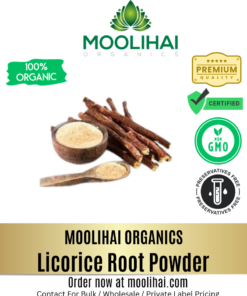

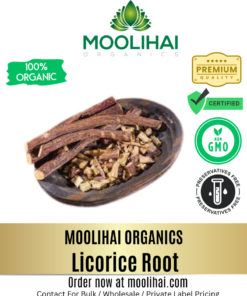

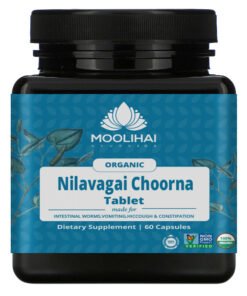
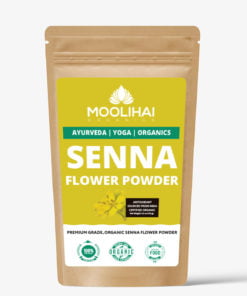


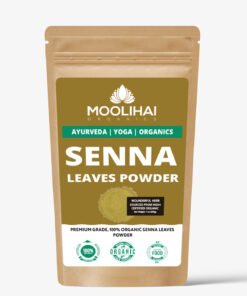
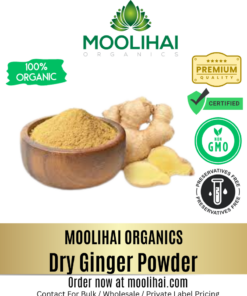

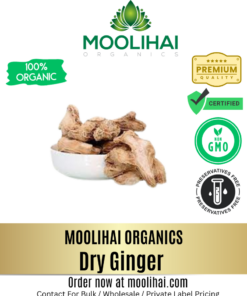

Ponnatharam Stone (Raw) | For Permanent Hair Removal
Vengai Paal | Black Bindi | Dhrishti Pottu | Vengai Pottu for Babies | 100% Natural
Dried Avaram Senna Flower / Cassia Senna Auriculata / Aavaram Poo / Tarwar / Amaltas Leaves / Senna Auriculata / Avaram Poo / Sanay / Alexandrina / Tanner’s Cassia flower
Natural Dried Moringa Flower – Moringa Oleifera – Drumstick Tree Flower – Murungai Poo – Munagaku Flower
Akasa Garudan Kilangu / Redfruit Creeper / Corallocarpus Epigaeus
Original Edible Camphor | Pacha Karpooram | Bhimseni Camphor
Saussurea Obvallata Seeds / Brahmakamal Seeds / Queen of the night / Sacred Saussurea Kon Kapfu / Brahma Kamalam / Nishagandha
Insulin Leaf Powder / Chamaecostus Cuspidatus / Costus Pictus / Spiral Ginger / Insulin Powder / Costus Igneus
Achu Pottu for Babies | Bindi Mould Set | Baby Seratta – 1 Set
Kaunch Beej Powder |Poonaikali | Velvet Bean Powder | Mucuna Pruriens | Kapikacchu | Natural Nervine Tonic & Muscle Builder
Aalam Pazham / Banyan Fruit Powder / Ficus Benghalensis / Marri Palu / Bargad / Dodda Alada Mara / Peraal / Vat Vriksha Powder
Traditional Vasambu Valayal for Babies | Calamus Bracelet | 100 % Pure & Natural